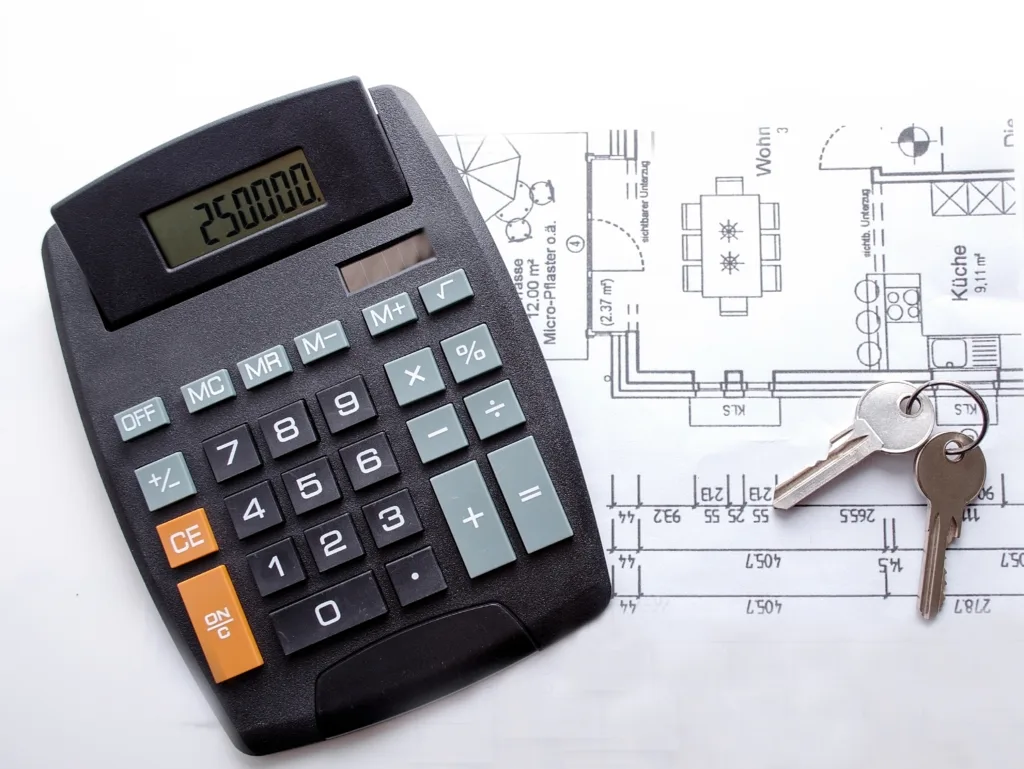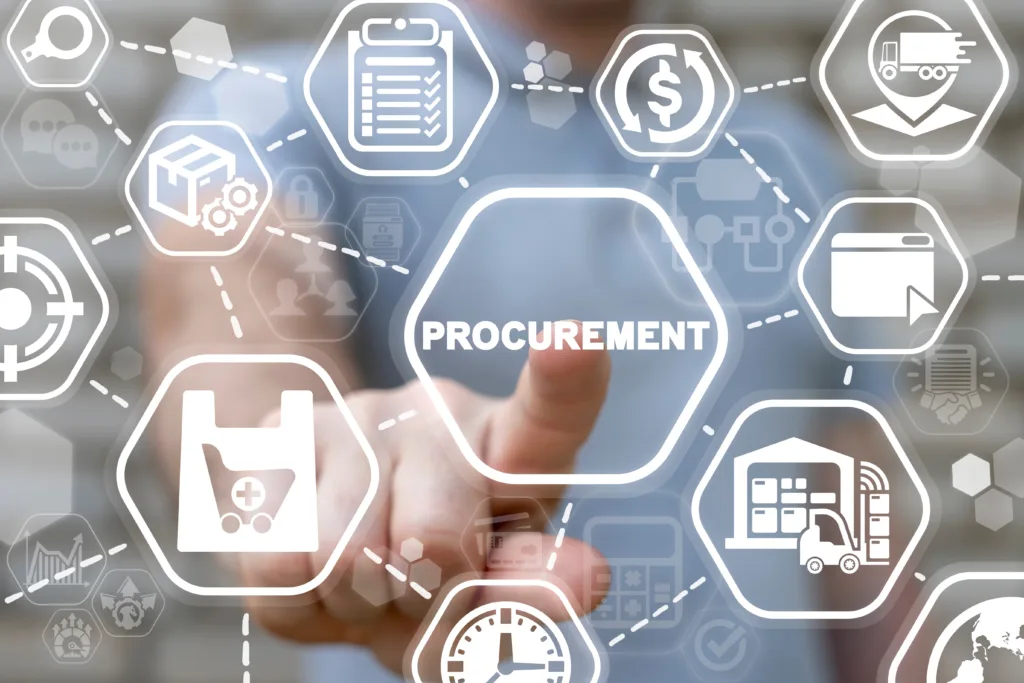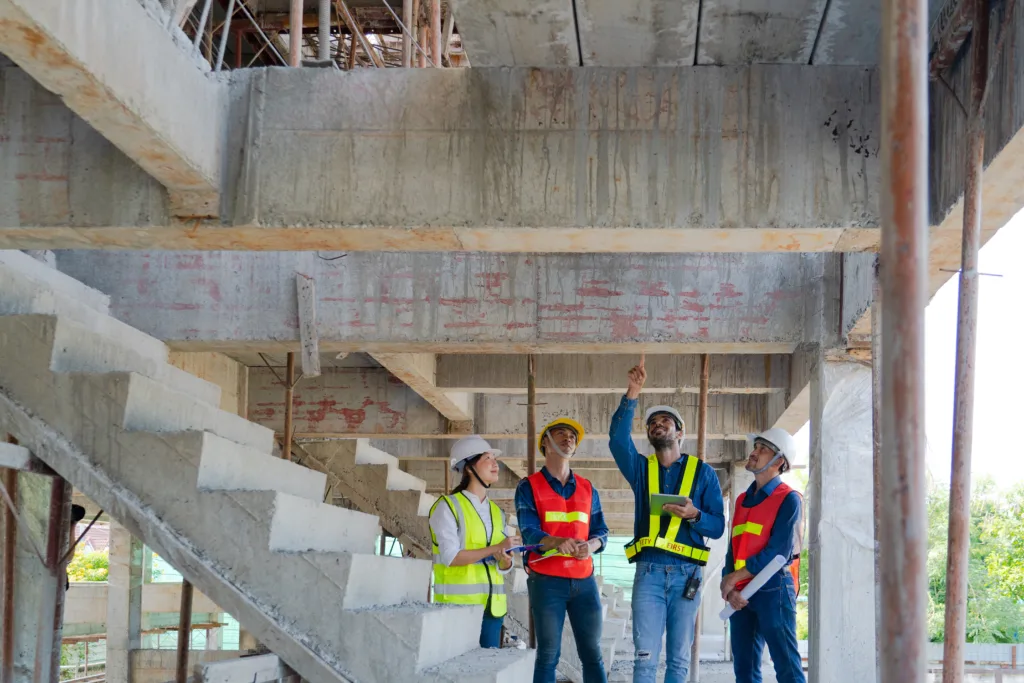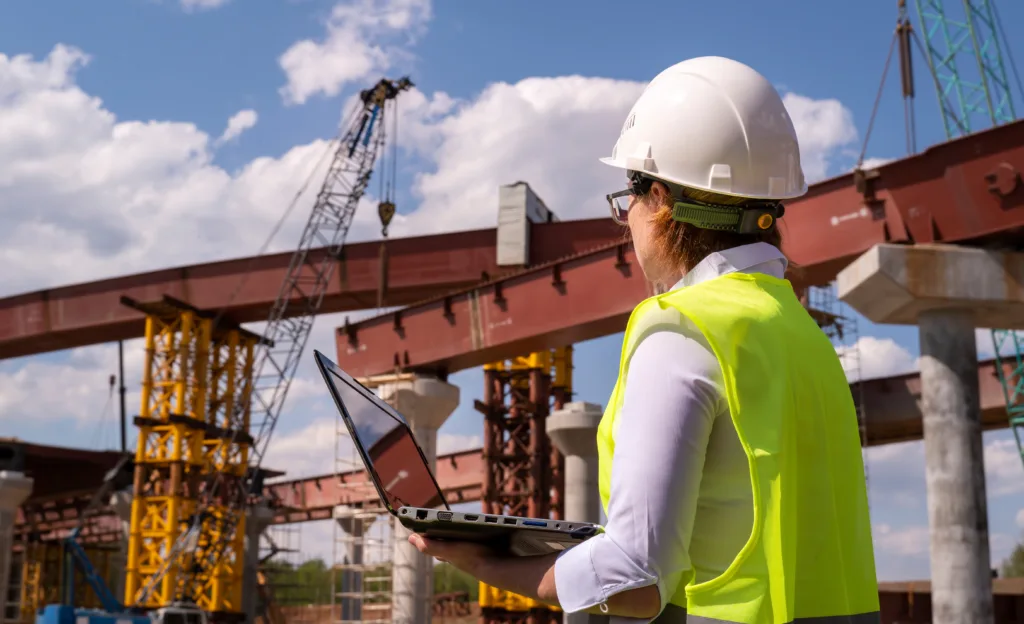In today’s rapidly evolving construction landscape, managing a project’s costs isn’t merely a desire; it’s an absolute necessity. From small residential projects to towering commercial structures, construction project management principles permeate every layer of the process. But among all the facets of project management, understanding how to manage construction costs stands out as a crucial pillar that can make or break a project.
The challenges in construction cost management are manifold. Fluctuating material prices, unforeseen site conditions, changing regulatory requirements, and other variables can spiral costs out of control. Navigating this complex terrain requires technical know-how, a strategic mindset, clear communication, and a forward-thinking approach.
But fear not! Whether you’re a seasoned project manager or just dipping your toes into the world of construction, this guide will equip you with actionable insights and practical tips to keep your projects on budget. We will explore everything from breaking down construction costs to efficient cost management strategies, procurement techniques, risk mitigation, and leveraging technology in construction project management.
So, fasten your seatbelt, grab a hard hat, and let’s embark on a journey to unravel the mysteries of managing construction project costs efficiently. It’s not just about saving money; it’s about building a solid foundation for your projects, ensuring success at every stage. Read on to discover the blueprint for cost-effective construction management that aligns with quality and performance.
Table of Contents
1: Understanding Construction Project Costs

Building a solid understanding of construction project costs is like laying the foundation for a skyscraper. It must be robust, well-planned, and capable of supporting everything that comes after. In this section, we’ll break down the costs into easily digestible parts and explore the importance of accurate cost estimation. Establishing a construction budget is crucial as it serves as the foundation for managing construction project costs effectively.
A. Breaking Down the Costs
1. Direct Costs:
- Labor: This includes wages for the skilled and unskilled workers who are building the project.
- Materials: From concrete to electrical wiring, the tangible components go into the construction.
- Equipment: Machinery and tools used to facilitate construction, such as cranes, bulldozers, and jackhammers.
2. Indirect Costs:
- Administrative Costs: These can encompass everything from office supplies to staff salaries for those managing the project.
- Insurance: Essential to cover potential liabilities during construction.
- Permits and Licensing: These legal necessities often vary by region and the nature of the project.
Understanding these cost categories is akin to knowing the ingredients in a recipe. They each play a vital role, and recognizing how they interact can lead to more successful construction project management. Developing a detailed cost estimate at the beginning of the project is crucial for managing construction costs efficiently. This estimate should include all direct and indirect costs, such as labor, materials, equipment, permits, and other expenses, to ensure the project is completed within budget constraints.
B. Importance of Cost Estimation
Cost estimation isn’t merely about crunching numbers; it’s about crafting a financial roadmap for your project. It requires a deep understanding of the construction process, a keen eye for detail, and, sometimes, a bit of foresight. Here’s why:
- Aligning with Reality: An accurate estimate ensures that your budget mirrors the actual requirements of the project. It helps avoid surprises down the road.
- Building Stakeholder Confidence: Whether it’s investors, clients, or team members, a precise cost estimation builds trust and sets clear expectations.
- Tools and Techniques: Various methods can aid in accurate cost estimation, from manual calculations to sophisticated software. Techniques like unit costing, where individual elements are priced out, or utilizing Building Information Modeling (BIM) can provide insights and efficiency.
Understanding construction project costs isn’t just a back-office task; it’s the heart of efficient cost management in construction. Every element carries a cost, from the laborers on the ground to the cranes towering above. Recognizing these costs and estimating them accurately sets the stage for successful project execution.
The road to mastering how to manage construction costs starts with a keen understanding of those costs. So, grab your calculator and blueprints, and let’s dive into the next section, where we’ll explore the vital world of planning and budgeting.
2: Planning and Budgeting

Navigating the complex waters of construction project management without a well-defined plan is akin to sailing without a compass. It’s not just about plotting a course; it’s about knowing when to adjust the sails and how to weather the storms. Emphasizing the importance of cost control in this context is crucial for managing construction project costs, improving profitability, and ensuring projects are delivered on time and within budget. This section will guide you through the essentials of planning and budgeting, pivotal aspects of managing construction costs. Effective planning and budgeting are key to preventing cost overruns, ensuring the success of the project, and improving overall financial management on construction projects.
A. Setting Realistic Budgets
1. Involvement of Stakeholders:
- Aligning Expectations: It’s essential to bring everyone on board, including clients, financiers, engineers, and even regulatory bodies. Their input can provide insights and ensure the budget aligns with real-world expectations.
- Transparency and Communication: Regular updates and open dialogues build trust and can help prevent misunderstandings that might lead to unnecessary costs.
2. Aligning Budget with Project Scope:
- Detailed Scope Definition:Defining the project scope helps avoid scope creep, which can inflate costs.
- Contingency Planning:Including a contingency in the budget allows for unexpected costs without derailing the project. Learning from the outcomes of current projects is crucial for improving budgeting practices for future projects, ensuring they are more financially sound by recalibrating budgeting practices based on historical data.
B. Efficient Cost Management in Construction Through Planning
1. Scheduling:
- Timeline Planning: A well-planned timeline ensures that resources are used efficiently, minimizing delays and associated costs.
- Milestone Tracking: Regular tracking of milestones keeps the project on course and helps identify potential budget overruns early on.
2. Resource Planning:
- Materials and Labor Coordination: Coordinating the acquisition of materials with labor scheduling ensures that neither is idle or wasted.
- Utilizing Technology: Tools like Project Management Software can automate many planning tasks, freeing time and potentially reducing costs. Emphasizing the benefits of technology to track construction project costs in real-time is crucial for better planning and cost management.
The wisdom in the old saying, “Failing to plan is planning to fail,” rings especially true in construction project management. Planning and budgeting are not mere paperwork; they’re the strategic backbone supporting efficient construction cost management.
From setting a realistic budget that reflects the true nature of your project to meticulous scheduling and resource planning, these are the tools in your cost-management toolkit. They’re not just about numbers but about nurturing a project from a mere idea to a tangible reality without breaking the bank.
Stay with me as we venture into the next section, where we’ll lay down the bricks and mortar of procurement strategies, another cornerstone in managing construction project costs efficiently.
3: Procurement Strategies

The construction site is buzzing, the plans are in place, and the budget is set. Now comes a critical phase that often doesn’t get the spotlight but plays a starring role in managing construction costs: Procurement. It’s not just about buying bricks and mortar; it’s about forging relationships, negotiating deals, and selecting the right partners for your journey. Let’s delve into the essentials of procurement strategies, shall we?
A. Choosing the Right Suppliers and Subcontractors
1. Quality vs. Cost Consideration:
- Striking a balance: Finding the sweet spot between quality and cost is like finding the perfect seasoning for a gourmet meal. It’s about taste, experience, and knowing what works best for your project.
- Long-Term Perspective: Sometimes, investing in higher quality may seem costly initially, but it saves money in the long run through durability and less maintenance.
2. Building Long-Term Relationships:
- Trust and Reliability: Establishing ongoing relationships with suppliers and subcontractors can lead to better deals, consistent quality, and smoother collaboration.
- Understanding Needs: A strong relationship means your suppliers will better understand your project’s unique requirements, leading to more efficient cost management in construction.
B. Negotiating Contracts
1. Understanding Contract Types:
- Fixed Price, Cost-Plus, and More: Different projects may benefit from different contract types. Understanding the nuances can lead to substantial cost savings.
- Flexibility and Clarity: Clearly defined contracts with some flexibility can adapt to unexpected changes without causing a financial upheaval.
2. Effective Negotiation Strategies:
- Preparation and Research: Knowing the market, understanding the supplier’s perspective, and setting clear objectives can make negotiations a win-win.
- Transparency and Ethics: Honest negotiation builds lasting relationships, which can be more valuable than a one-time financial gain.
Procurement is not just a purchasing department’s concern; it’s the heart of a construction project’s financial health. It’s about making wise choices, cultivating relationships, and knowing when and how to drive a hard bargain.
The art of procurement is honed over time with experience, intuition, and a dash of creativity. It’s not just about the numbers; it’s about people, partnerships, and a shared vision.
As we forge ahead, join me in the next section, where we’ll explore the unknown terrains of risk management, another crucial aspect in navigating the path of managing construction project costs efficiently.
4: Risk Management

Construction projects are like thrilling adventure novels, filled with twists and turns, unexpected challenges, and opportunities to triumph. Risk management guides you through this adventure, helping you anticipate the twists and navigate the turns gracefully and efficiently. In the world of construction project management, risk isn’t something to fear; it’s something to manage. Let’s explore how.
A. Identifying Potential Risks
1. Market Fluctuations:
- Understanding Trends: Commodity prices can swing like a pendulum, and knowing the market helps plan purchases and avoid unnecessary expenses.
- Currency Risks: For international projects, currency exchange rates can be a hidden snare. Monitoring and hedging can be valuable tools.
2. Unexpected Site Conditions:
- Site Surveys: Thorough initial surveys can uncover potential issues like soil quality, reducing the likelihood of unexpected and costly surprises later.
- Historical Data: Sometimes, looking at the past is the best way to predict the future. Historical data on similar projects can provide valuable insights.
3. Regulatory Changes:
- Staying Informed: Laws and regulations can change, like the weather. Staying up-to-date and compliant is essential for smooth sailing.
B. Mitigating Risks
1. Contingency Plans:
- Planning for the Unexpected: A wise captain always has a backup plan. Having contingencies for key risks ensures you can adapt without derailing the project.
- Budget Allocations: A contingency fund within the budget can absorb small shocks without causing a financial earthquake.
2. Regular Risk Assessments:
- Periodic Reviews: Risk isn’t static; it’s a living, breathing part of the project. Regular assessments ensure that you’re always one step ahead.
- Involving the Team: Different perspectives can uncover hidden risks. Involving various team members in risk assessments can provide a more comprehensive view.
Risk management isn’t about avoiding risks but embracing them as a natural part of the journey and learning how to dance with them. It’s a blend of art and science, intuition and analysis.
From identifying potential stumbling blocks to creating a path around them, risk management is a critical tool in managing construction project costs efficiently. It’s not about fear but foresight, flexibility, and the courage to forge ahead, even when the path is uncertain.
As we build towards our conclusion, join me in the following sections, where we’ll pull all the threads together into a coherent and robust framework for success.
5: Monitoring and Control

Imagine steering a ship through an ever-changing sea filled with currents, weather shifts, and unexpected obstacles. Now, translate that to managing a construction project. Both require a vigilant eye, a steady hand, and the wisdom to know when to adjust the course. Monitoring and control in construction are the compass and rudder that guide your project to successful completion. Here’s how you can manage this intricate dance:
A. Continuous Monitoring
1. Regular Progress Tracking:
- Keeping an Eye on the Horizon: Regular updates, weekly meetings, and routine site visits are essential to gauge where you are and where you’re headed.
- Utilizing Technology: Systems like Building Information Modeling (BIM) and specialized project management software provide real-time insights, streamlining monitoring processes.
2. Performance Metrics:
- Measuring Success: Establishing clear performance indicators helps you understand if you’re on the right track and where adjustments might be needed.
3. Feedback Loops:
- Learning and Adapting: Encouraging feedback from team members, suppliers, and clients can provide fresh perspectives and opportunities for continuous improvement.
B. Effective Control Measures
1. Issue Identification and Resolution:
- Spotting the Icebergs: Early identification of problems enables quicker solutions, keeping the project on track.
- Creating a Responsive Team: A culture that encourages immediate reporting and rapid response can be a lifesaver in turbulent waters.
2. Change Management:
- Adapting to Change: Change is inevitable, but chaos isn’t. A well-defined change management process ensures that alterations are handled systematically without inflating costs.
- Documentation and Transparency: Recording and communicating changes prevent misunderstandings and keep everyone aligned.
Monitoring and control are not merely about oversight but guidance, responsiveness, and resilience. It’s about not just steering the ship but understanding the sea. In the world of construction project management, these principles are your lighthouses, guiding you through fog and storms to a successful conclusion.
From the project’s inception to the moment, the keys are handed over, continuous vigilance and wise control transform a plan on paper into a living, breathing structure. As we near the end of our journey, let’s reflect on what we’ve learned and how these principles can become a part of your blueprint for success in managing construction project costs efficiently.
6: Technology in Construction Project Management

Welcome to the digital era of construction, where the swing of a hammer meets the click of a mouse. It’s a fascinating intersection, isn’t it? Building tangible structures with the assistance of intangible technology. It’s more than a trend; it’s a revolution reshaping how to manage construction costs and execute projects efficiently. Let’s step into this digital construction zone and see what’s happening.
A. Leveraging Software for Project Management
1. Building Information Modeling (BIM):
- Virtual Construction: Imagine building a structure virtually before a single brick is laid. BIM allows for identifying potential issues and optimizations in the design phase itself.
- Collaboration and Coordination: BIM is a central hub, enhancing communication between architects, engineers, and contractors.
2. Project Management Tools:
- Streamlined Planning and Tracking: Tools like Asana, Trello, or specialized construction management software bring everyone onto the same page, from schedules to budget tracking.
B. Utilizing Modern Equipment and Techniques
1. Drones and Robotics:
- Eyes in the Sky: Drones can provide aerial insights into construction progress, while robotics can automate repetitive tasks, boosting efficiency.
- Enhanced Safety: Robotics and drones can take over risky operations, improving safety on the construction site.
2. 3D Printing:
- Rapid Prototyping: From creating models to constructing entire segments, 3D printing is revolutionizing how we build, potentially saving time and costs.
C. Embracing Sustainability Through Technology
1. Energy-Efficient Designs and Materials:
- Smart Buildings: Technology enables intelligent design, from energy-efficient HVAC systems to smart lighting, aligning with the global shift towards sustainability.
- Sustainable Materials: Innovative technologies are introducing materials that are not only durable but also eco-friendly, striking a balance between efficiency and responsibility.
Technology in construction project management is like the skilled artisan of our digital age. It’s not replacing the human touch; it’s enhancing it. Technology is the new partner in crafting our physical world, from virtual blueprints to automated machines dancing to a builder’s tune.
It’s a landscape of endless possibilities where imagination meets innovation. As we embrace this digital revolution, it becomes an essential tool in our arsenal for efficient cost management in construction, marrying the timeless art of building with the endless potential of technology.
As we wind down our exploration, stay tuned for the concluding thoughts, where we’ll weave together all these strands into a comprehensive understanding of managing construction project costs efficiently.
Conclusion
And so, dear reader, we reach the final strokes of our construction masterpiece, the culmination of a journey through the bustling landscape of construction project management. From the first sketches on paper to the ringing of virtual hammers and robotic arms, we’ve explored the multifaceted world of building, all with a keen eye on managing construction costs efficiently.
- Understanding Construction Project Costs:
We began by laying the foundation, understanding the ingredients that make up the complex world of construction costs, and appreciating the delicate balance of quality and expenditure.
- Planning and Budgeting:
We then drew the blueprints, recognizing the significance of meticulous planning, robust budgeting, and the wisdom of looking ahead.
- Procurement Strategies:
Our journey took us through the bustling marketplace, selecting partners, forging relationships, and driving hard bargains, all in the name of quality and efficiency.
- Risk Management:
Like intrepid explorers, we navigated the uncertain terrains of risk, learning to dance with the unexpected and embracing challenges as opportunities.
- Monitoring and Control:
With a vigilant eye and a steady hand, we steered the ship, continuously tracking, adapting, and ensuring that the course was proper and the destination in sight.
- Technology in Construction Project Management:
Finally, we stepped into the future, embracing the digital revolution and reshaping the construction landscape, marrying tradition with innovation.
Managing construction project costs is not a static formula; it’s a dynamic art form. It combines science and intuition, planning and flexibility, tradition and innovation. It’s a dance that every project manager, contractor, engineer, and stakeholder engages in, each playing their unique part in crafting the physical world around us.
In a world where budgets are tight, and expectations are high, these insights and strategies become more than tools; they become guiding principles, a compass to navigate the intricate maze of construction. They are the heart and soul of building responsibly, creatively, and efficiently.
As you embark on your next construction adventure, may these words be your companion and guide, a source of inspiration and wisdom? Here’s to building dreams, brick by brick, byte by byte.
Related posts
Read our articles where you can find useful and relevant information about construction cost management:
- What is Cost Reporting in Construction: A Comprehensive Guide
- Mastering Construction Cost Planning in Construction Projects
About the Author

Mikk Ilumaa
Mikk Ilumaa is the CEO of Bauwise, a leader in construction financial management software with over ten years of experience in the construction software industry. At the helm of Bauwise, Mikk leverages his extensive background in developing construction management solutions to drive innovation and efficiency. His commitment to enhancing the construction process through technology makes him a pivotal figure in the industry, guiding Bauwise toward setting new standards in construction financial management. View profile






